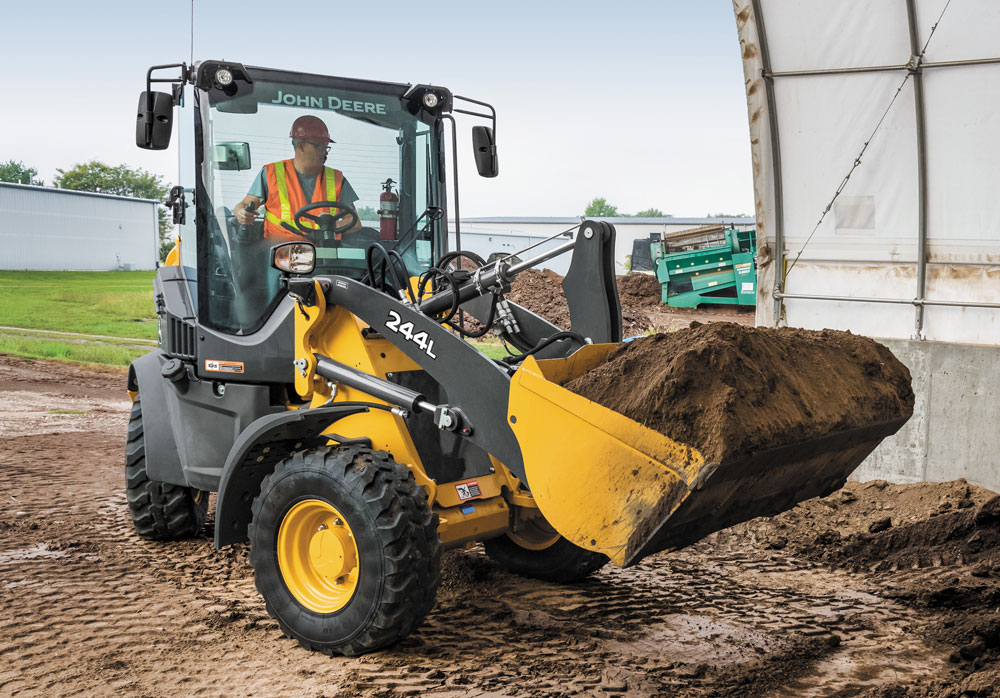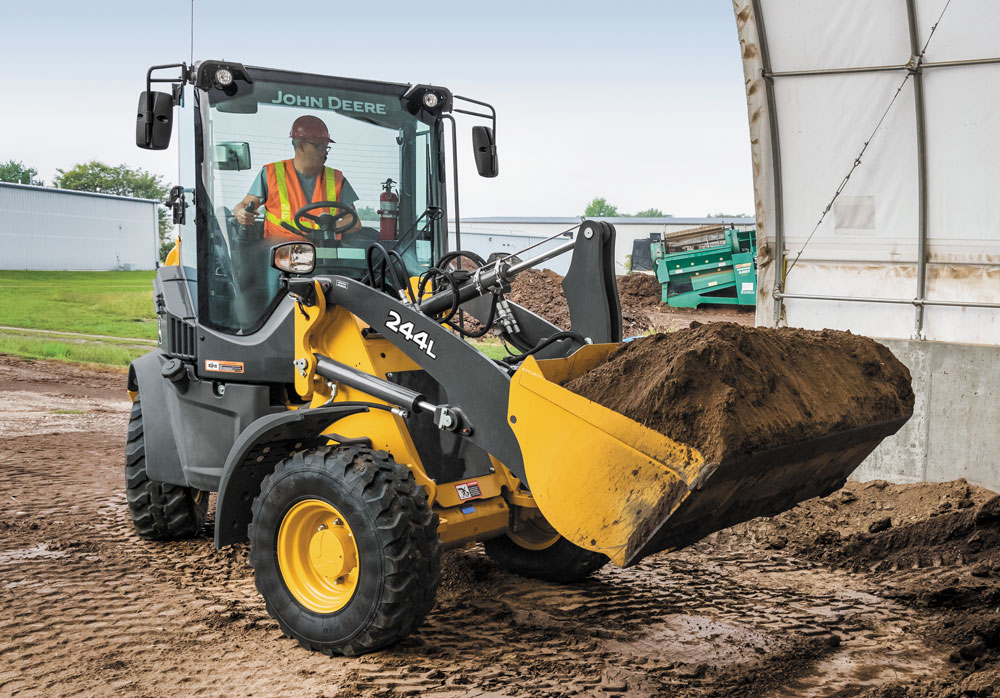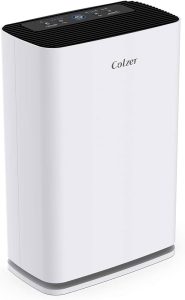Contents
If you own a compact tractor and are in need of a front end loader, look no further than “A Guide to Choosing the Right Front End Loader for your Compact Tractor.” This comprehensive guide has all the information you need to make an informed decision. From understanding the different types of loaders available to assessing your specific needs, this guide will help you select the perfect front end loader that will enhance the functionality and efficiency of your compact tractor. Whether you are a seasoned farmer or a casual hobbyist, this guide is a must-have resource for anyone in the market for a front end loader.
1. Factors to Consider
When choosing the right front end loader for your compact tractor, there are several important factors that you should consider. These factors will not only determine the overall performance and efficiency of the loader but also ensure that it is compatible with your tractor and meets your specific needs. Here are the key factors to consider:
1.1 Size and compatibility
The size of the loader is an essential factor to consider. You need to make sure that the loader you choose is the right size for your compact tractor. It should be able to fit properly and not interfere with the tractor’s maneuverability. Additionally, you need to ensure that the loader is compatible with your tractor’s hydraulic system and can be easily connected and disconnected.
1.2 Lift capacity
Lift capacity refers to the maximum weight that the loader can safely lift. It is important to assess your specific lifting needs and choose a loader with a lift capacity that meets or exceeds those requirements. Keep in mind that overloading the loader can lead to safety hazards and damage to both the loader and your tractor.
1.3 Height clearance
Consider the height clearance when selecting a front end loader for your compact tractor. You need to ensure that the loader is not too tall and can operate under low-clearance areas such as barns or storage sheds. Failing to consider the height clearance may limit the functionality of the loader and prevent it from being used in certain applications.
1.4 Attachment options
Different loaders come with various attachment options, such as buckets, forks, and grapples. Assess your specific needs and consider the types of attachments that you may require for your intended tasks. It is also crucial to ensure that the loader you choose has a quick and easy attachment system that allows you to switch between different attachments efficiently.
1.5 Maneuverability
The maneuverability of the front end loader is another crucial factor to consider. You need to assess the loader’s turning radius and its ability to navigate tight spaces. A loader with good maneuverability will allow you to work efficiently, especially in small or confined areas. Make sure the loader you choose has the necessary agility to meet your specific needs.
2. Loader Options
Once you have considered the necessary factors, it is time to explore the specific options available for front end loaders. Here are the key aspects to consider when looking at different loader options:
2.1 Bucket size
The size of the bucket is an important consideration when selecting a front end loader. A larger bucket size can increase your productivity and efficiency by allowing you to move more material in each cycle. However, it is important to choose a bucket size that is appropriate for your tractor’s lift capacity and intended tasks.
2.2 Bucket material
The material of the bucket plays a significant role in its durability and performance. Common bucket materials include steel and reinforced plastic. Steel buckets are highly durable and can withstand heavy-duty use, but they may be heavier and cause more strain on your tractor. Reinforced plastic buckets, on the other hand, are lighter and more resistant to corrosion but may not be as durable in extreme conditions.
2.3 Attachment types
Front end loaders offer various attachment types, such as forks, grapples, and bale spears, to expand their capabilities. Consider the specific attachments that you may need for your tasks, such as lifting pallets or handling brush. Ensure that the loader you choose can accommodate the desired attachments and has a quick and easy attachment system.
2.4 Hydraulic control
Hydraulic control is a crucial aspect of front end loaders. You need to ensure that the loader’s hydraulic system is compatible with your tractor’s hydraulic capabilities. Look for loaders that offer smooth and precise control, allowing you to operate the attachments with ease and efficiency.
2.5 Quick-attach system
A quick-attach system allows you to quickly and easily attach and detach the loader from your compact tractor. Consider loaders that offer a reliable and efficient quick-attach system. This system should ensure a secure connection and minimize downtime when switching between attachments or removing the loader altogether.
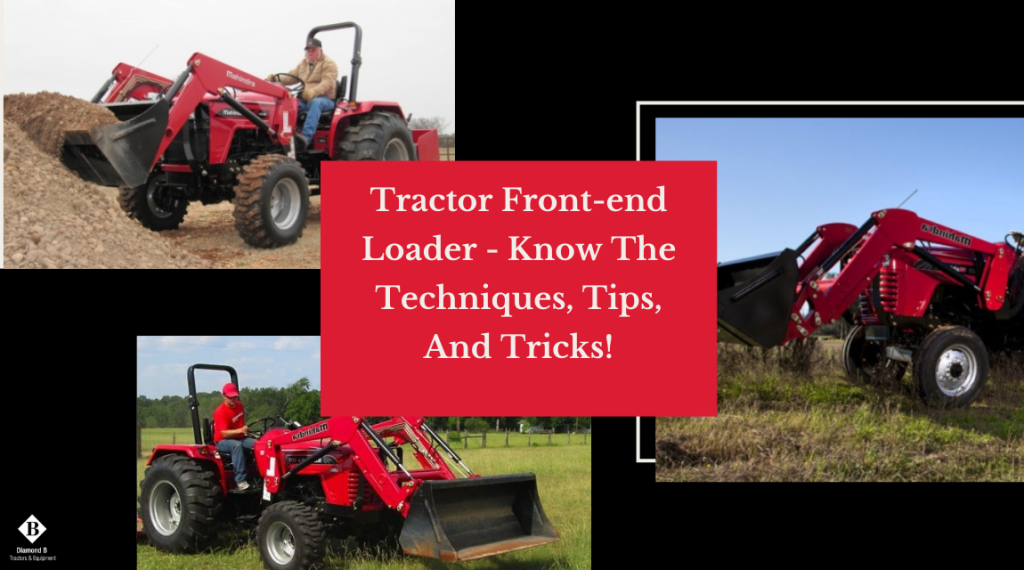
3. Brand and Manufacturer
Choosing a reputable brand and manufacturer for your front end loader is essential to ensure quality, reliability, and customer support. Here are the key factors to consider when evaluating different brands and manufacturers:
3.1 Manufacturer reputation
Research the reputation of different manufacturers in the market. Look for brands that have a positive reputation for producing high-quality loaders that are well-designed and durable. Reading customer reviews and seeking recommendations from other tractor owners can provide valuable insights into the reputation of a manufacturer.
3.2 Availability of parts
Ensure that the manufacturer offers readily available parts for their loaders. It is crucial to choose a brand that provides a reliable supply of parts and accessories. This availability of parts ensures that you can easily find replacements or upgrades in the future, minimizing downtime and maximizing the longevity of your loader.
3.3 Warranty and customer support
Check the warranty offered by the manufacturer for their loaders. A comprehensive warranty can provide peace of mind, knowing that you are protected against any manufacturing defects or issues. Additionally, consider the level of customer support provided by the manufacturer. A responsive and helpful customer support team can assist you with any questions or concerns that may arise during ownership.
4. Pricing and Budget
When making a purchase decision, your budget is an important factor to consider. Here are the key aspects to consider regarding pricing and budget:
4.1 Cost of the loader
Front end loaders come in various price ranges, depending on their size, features, and brand. Before making a decision, set a budget range that you are comfortable with. Research different models within your budget and compare their features and capabilities. It is important to strike a balance between your budget and the quality of the loader.
4.2 Additional expenses
In addition to the initial cost of the loader, consider any additional expenses that may arise. This includes the cost of attachments, accessories, and any necessary modifications or installations. It is essential to consider the overall cost of ownership and ensure that it aligns with your budget.
4.3 Financing options
If the upfront cost of the loader is beyond your budget, consider the financing options available. Some manufacturers or dealers offer financing plans that allow you to spread the cost over a period of time. Evaluate these options and choose the one that provides the most favorable terms and interest rates.
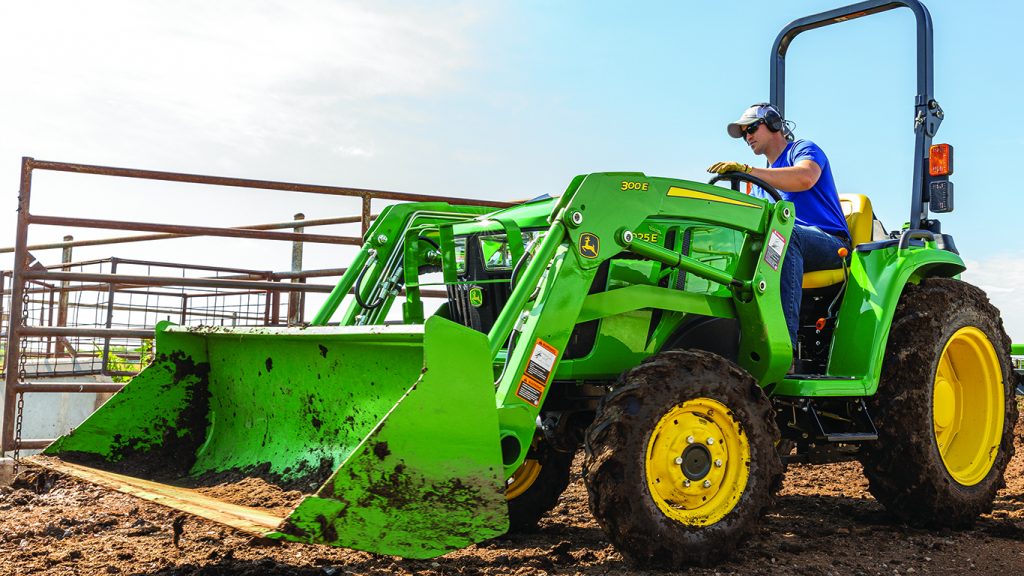
5. Efficiency and Performance
To ensure that the front end loader meets your productivity needs, you must assess its efficiency and performance. Here are the key aspects to consider in terms of efficiency and performance:
5.1 Cycle times
The cycle time refers to the time it takes for the loader to complete a full cycle, from loading to unloading. A faster cycle time can significantly improve your productivity, allowing you to complete tasks more quickly. Look for loaders that offer efficient hydraulic systems and quick movement capabilities for optimal cycle times.
5.2 Lift height
The lift height of the loader determines how high it can lift materials. Consider the lift height that you require for your specific tasks. If you need to load materials into high-sided trucks or trailers, choose a loader with sufficient lift height to reach those heights comfortably.
5.3 Breakout force
Breakout force refers to the loader’s ability to break through resistance when lifting heavy loads or moving stubborn materials. A higher breakout force indicates a more powerful loader that can handle demanding tasks. Assess your requirements and choose a loader with an appropriate breakout force for your specific needs.
5.4 Traction
Consider the loader’s traction capabilities, especially if you will be operating on uneven or slippery terrain. Look for loaders that offer features such as differential locks or four-wheel drive to enhance traction and ensure stability during operation. Good traction is essential for safe and efficient performance in various conditions.
5.5 Stability
Stability is crucial for safe and efficient operation. Consider loaders with a wide stance and a low center of gravity to enhance stability when lifting heavy loads or working on uneven ground. Stability features, such as counterweights or stabilizers, can also improve the overall balance and stability of the loader.
6. Safety Features
Ensuring the safety of both the operator and the surrounding environment is of utmost importance when choosing a front end loader. Here are the key safety features to consider:
6.1 Rollover protection system
A rollover protection system (ROPS) is essential for protecting the operator in the event of a rollover or tip-over. Look for loaders that come equipped with ROPS or have the option to install one. ROPS provides a protective structure around the operator’s seat, reducing the risk of injury in potential accidents.
6.2 Safety locks
Safety locks are crucial for securing the loader in place during transportation or when not in use. These locks prevent accidental movement or detachment of the loader, reducing the risk of damage or injury. Ensure that the loader you choose has reliable safety locks that are easy to engage and disengage.
6.3 Visibility
Good visibility from the operator’s seat is essential for safe operation. Consider loaders that offer a clear view of the surrounding area, minimizing blind spots. Features such as large windows, well-positioned mirrors, and optional cameras can significantly improve visibility, allowing the operator to maneuver the loader with confidence.
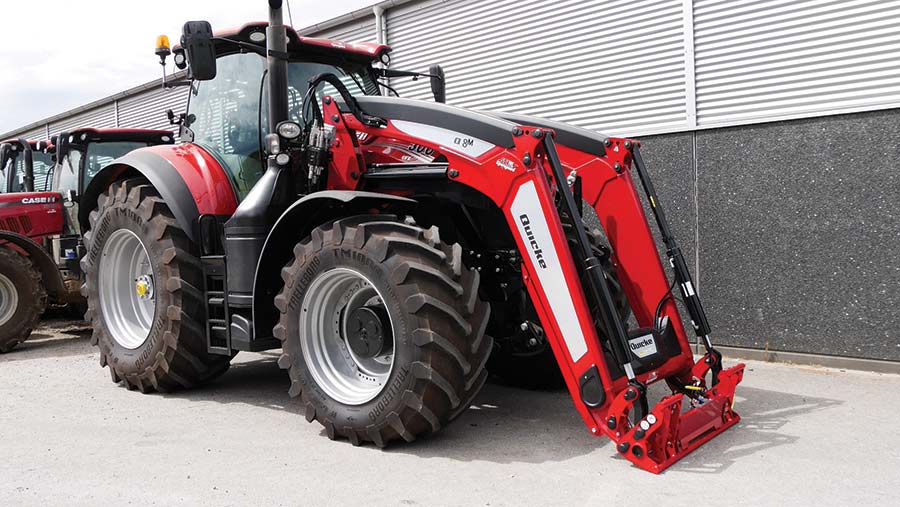
7. Maintenance and Service
Regular maintenance and access to reliable service are vital to keep your front end loader in optimal condition. Consider the following aspects related to maintenance and service:
7.1 Ease of maintenance
Choose a loader that is designed with ease of maintenance in mind. Look for loaders that provide easy access to critical components for routine maintenance tasks, such as oil changes or filter replacements. Clear instruction manuals and accessible service points can simplify the maintenance process and save you time and effort.
7.2 Required service intervals
Different loaders may have different service intervals, depending on their design and components. Assess the required service intervals for the loaders you are considering. Look for loaders that have longer service intervals, as this can minimize downtime and reduce the overall cost of ownership in the long run.
7.3 Authorized service centers
Ensure that the manufacturer of the loader provides a network of authorized service centers in your area. Having access to trained technicians and genuine parts is crucial for timely repairs and maintenance. Authorized service centers can provide reliable expertise and ensure that your loader receives the necessary care to maintain its performance and lifespan.
8. Product Reviews
Before making a final decision, it is beneficial to research and compare different models of front end loaders. Here are the aspects to consider when reading product reviews:
8.1 Comparison of popular models
Read product reviews that compare popular models of front end loaders. These comparisons can provide insights into the differences in features, performance, and overall value for money. Look for reviews that focus on loaders designed for compact tractors to ensure relevance to your specific needs.
8.2 Pros and cons
Take note of the pros and cons highlighted in product reviews. Pay attention to the aspects that are most important to you, such as durability, ease of use, or specific features. Keep in mind that different reviews may prioritize different aspects, so it is helpful to read multiple opinions to gain a comprehensive understanding of each loader.
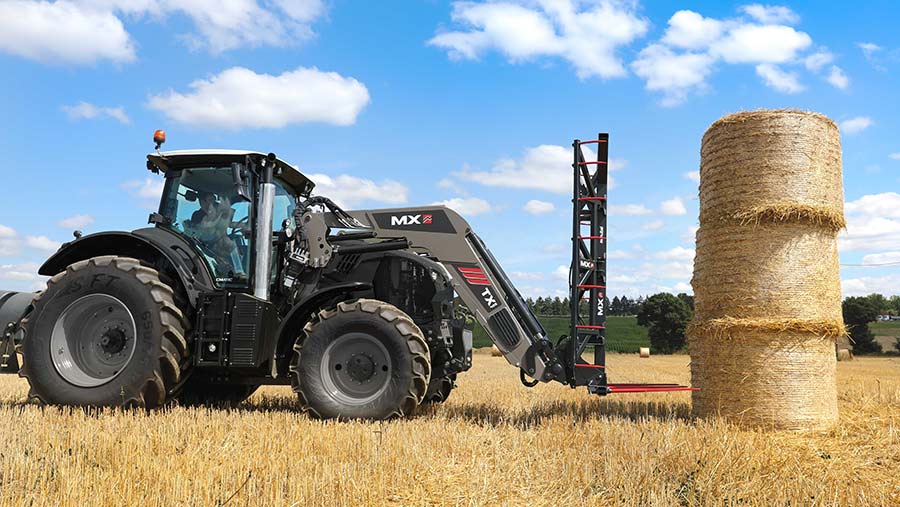
9. Customer Feedback and Recommendations
Customer feedback and recommendations can provide valuable insights into the real-world performance and satisfaction of front end loaders. Consider the following factors when evaluating customer feedback:
9.1 User reviews
Read user reviews from tractor owners who have used the front end loaders you are considering. These reviews often highlight specific experiences, issues, or benefits that may not be apparent from product descriptions or specifications. Pay attention to common themes or consistent feedback in order to form a well-rounded understanding of each loader’s performance.
9.2 Recommendations from experts
Seek recommendations from experts in the field, such as experienced tractor owners, agricultural professionals, or industry experts. These individuals can provide valuable advice based on their knowledge and expertise. Their recommendations may help you narrow down your options and guide you towards the front end loader that best meets your needs.
10. Finalizing the Purchase
Once you have considered all the factors and gathered information, it is time to finalize the purchase of your front end loader. Here are the key aspects to consider during this phase:
10.1 Comparing quotes
Collect quotes from various dealers or manufacturers for the loaders that meet your requirements. Compare the prices, warranty terms, and any additional services offered. Consider not only the initial cost but also the long-term value and the overall package offered by each quote.
10.2 Negotiating terms
Don’t be afraid to negotiate the terms of the purchase. You may be able to secure a better price, favorable financing terms, or additional accessories or services. Be clear with your requirements and budget, and see if the dealer or manufacturer is willing to accommodate your needs.
10.3 Confirming delivery and installation
Before finalizing the purchase, ensure that you have a clear understanding of the delivery and installation process. Confirm the timeline and any specific requirements for receiving and installing the front end loader. This will help you plan accordingly and ensure a smooth transition once the loader arrives.
By carefully considering these factors and following the recommended steps, you can choose the right front end loader for your compact tractor. Remember to prioritize your specific needs, evaluate the options available, and gather as much information as possible. With the right front end loader, you can enhance the capabilities of your compact tractor and tackle various tasks with efficiency and ease. Happy shopping!
